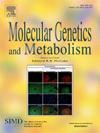Clinical, biochemical, and molecular findings in adults with hyperammonemia: A French bi-centric retrospective study
IF 3.5
2区 生物学
Q2 ENDOCRINOLOGY & METABOLISM
引用次数: 0
Abstract
Introduction
Regardless of its mechanism, hyperammonemia can cause coma and death, and requires urgent management. This study aims at describing the landscape of causes of hyperammonemia in adults and at evaluating the performance of targeted next-generation sequencing (NGS) in this setting.
Methods
We analyzed two cohorts. The first included patients aged ≥15 years presenting with hyperammonemia ≥100 μmol/L at Necker-Enfants Malades (NEM) University Hospital for 10 years and at Toulouse University Hospital for 1.5 years. The second cohort included patients who underwent genetic testing for inherited metabolic disease (IMD) via targeted NGS at NEM hospital over a 5 year-period, regardless of their inclusion in the first cohort, all with hyperammonemia ≥100 μmol/L after age 15.
Results
We included 184 patients in the first cohort, with a median peak ammonia concentration of 155 μmol/L. Among them, 61 patients (33 %) presented with coma. Non-genetic liver failure or portosystemic shunt was present in 133 patients. Twenty-three patients had received asparaginase treatment (none with coma despite a median ammonia level of 257 μmol/L), 7 had received valproic acid, 3 had undergone surgical ureterorectal anastomosis, 2 had multiple myeloma, 1 was receiving 5-Fluorouracil (5FU) for metastatic gastrointestinal cancer, 1 had disseminated atypical mycobacteriosis with Mycobacterium genavense (urease-producing bacteria) in a renal transplant setting and 13 had a genetically confirmed IMD diagnosed in adulthood.
In the second cohort of 17 patients, genetic testing was positive in 5 of 6 patients with IMD-suggestive biochemical profiles (2 CPS1 deficiencies, 1 OTC deficiency, 1 multiple acyl-coA dehydrogenase deficiency, and 1 lysinuric protein intolerance), and negative in patients without biochemical profile suggesting an IMD. Among them, four patients suffered from protein malnutrition related to various severe conditions (gastric bypass, metastatic colorectal adenocarcinoma, Duchenne muscular dystrophy, and short bowel syndrome).
Conclusion
The causes of hyperammonemia in adults are varied. In cases of acute episodes without unequivocal metabolic profiles (when unwell) and with an acquired identified cause of hyperammonemia, genetic investigations had a low yield.
成人高氨血症的临床、生化和分子研究结果:法国双中心回顾性研究
无论其机制如何,高氨血症可导致昏迷和死亡,需要紧急处理。本研究旨在描述成人高氨血症的病因,并评估靶向下一代测序(NGS)在这种情况下的表现。方法对两个队列进行分析。第一组患者年龄≥15岁,在necer - enfants Malades (NEM)大学医院住院10年,在Toulouse大学医院住院1.5年,出现高氨血症≥100 μmol/L。第二组纳入了在NEM医院通过靶向NGS进行遗传代谢性疾病(IMD)基因检测超过5年的患者,无论他们是否被纳入第一组,15岁后高氨血症≥100 μmol/L。结果第一队列184例患者,氨浓度中位峰为155 μmol/L。其中61例(33%)出现昏迷。133例患者出现非遗传性肝衰竭或门静脉分流。23例患者接受了天冬酰胺酶治疗(尽管氨水平中位数为257 μmol/L,但没有出现昏迷),7例接受了丙戊酸治疗,3例接受了手术输尿管直肠吻合,2例患有多发性骨髓瘤,1例因转移性胃肠道癌接受了5-氟尿嘧啶(5FU)治疗,1例在肾移植环境中患有广谱性非典型分枝杆菌病(产脲酶细菌),13例在成年后被诊断为遗传证实的IMD。在第二组17例患者中,6例具有IMD提示生化特征(2例CPS1缺乏,1例OTC缺乏,1例多重酰基辅酶a脱氢酶缺乏症,1例赖氨酸尿酸蛋白不耐受)的患者中有5例基因检测呈阳性,无IMD提示生化特征的患者基因检测呈阴性。其中4例患者存在与各种严重情况(胃分流术、转移性结直肠癌、杜氏肌营养不良、短肠综合征)相关的蛋白质营养不良。结论成人高氨血症的病因是多种多样的。在没有明确代谢谱的急性发作(当身体不适时)和获得性高氨血症的确定原因的情况下,遗传调查的结果很低。
本文章由计算机程序翻译,如有差异,请以英文原文为准。
求助全文
约1分钟内获得全文
求助全文
来源期刊

Molecular genetics and metabolism
生物-生化与分子生物学
CiteScore
5.90
自引率
7.90%
发文量
621
审稿时长
34 days
期刊介绍:
Molecular Genetics and Metabolism contributes to the understanding of the metabolic and molecular basis of disease. This peer reviewed journal publishes articles describing investigations that use the tools of biochemical genetics and molecular genetics for studies of normal and disease states in humans and animal models.
 求助内容:
求助内容: 应助结果提醒方式:
应助结果提醒方式:


